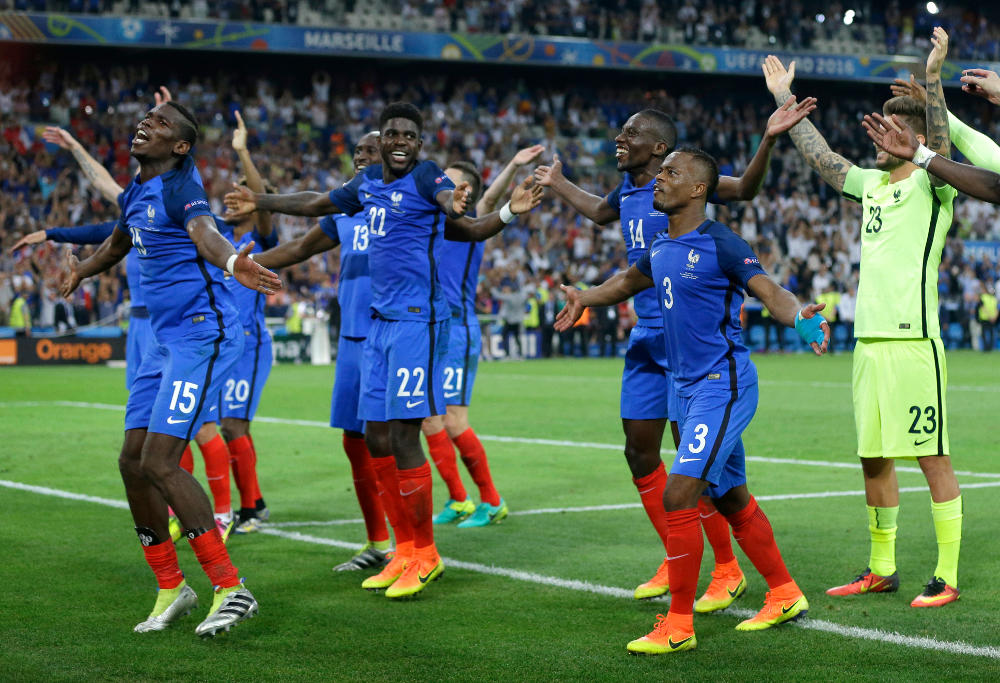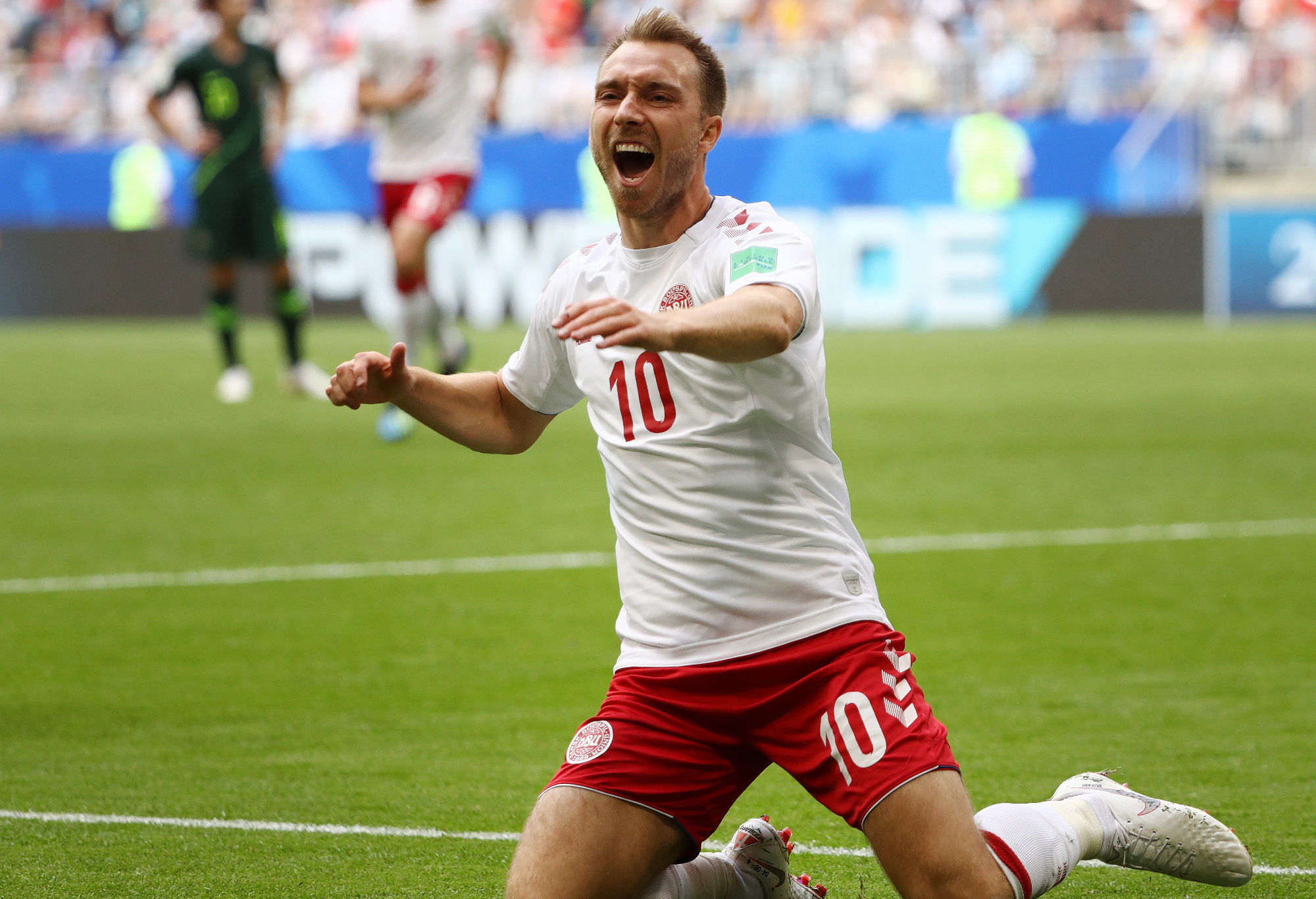Now the World Cup (cricket) is over and the World Cup (rugby league) is almost done, we’re just about ready for the World Cup to begin.
The Socceroos have landed and will be acclimatising to life in a repressive, barren place with an economy built on fossil fuels and migrant labour. The ones from Western Australia probably won’t have too many problems.
They might have time to scan forwards to their opponents, so we’ve run the rule over who the Socceroos will run into when the football gets going next week.
France
Obviously, we have to start with France. They’re the reigning champions and Socceroos” first opponent. They’re also the team that fans will know the most about, given that a) they played Australia last time and b) did I mention they won the bloody thing?
This iteration of Les Bleus is perhaps slightly less fancied, though they are still third favourites, largely because the two key components of their 2018 winning midfield – N’Golo Kante and Paul Pogba – are both injured. Throw in the innate difficulty of winning twice in succession, a feat not achieved since Pele’s Brazil in 1962, and you’d have to say that France are up against it.

French players celebrate after the Euro 2016 semifinal soccer match between Germany and France, at the Velodrome stadium in Marseille, France, Thursday, July 7, 2016. (AP Photo/Thanassis Stavrakis)
Then again: Qatar owns PSG, their biggest club, and they still have the core of a World Cup-winning side and a double World Cup-winning manager. Oh, and Kylian Mbappe, who is very good.
An alternative take: France oscillate between very good and spectacularly bad, with the winners of 1998 departing in the Group Stage of 2002 and the beaten Finalists of 2006 imploding in 2010. The signals are towards a disaster, with Mbappe falling out with Pogba in a row about a witchdoctor. Google it yourselves, it’s well worth it.
Stars
OK, well the list of stars is long. Up with the aforementioned Mbappe, there’s Karim Benzema, the best player in last year’s Champions League, and Antoine Griezmann, still one of their best. Hugo Lloris, Rafa Varane and Ousemane Dembele all go around again. New names to casual fans might be Aurelien Tchouameni and Eduardo Camavinga of Real Madrid, or William Saliba, who has made a great start to life in the Premier League at Arsenal. Honestly though, you could just list the whole squad.
Style
Manager Didier Deschamps was a hard-nosed defensive midfielder who captained France to their first win, on home soil in 1998, and his team plays in his image. Essentially, they’ll lay a relatively simple platform built around four defenders and three midfielders that will allow the star power to do whatever they want up front.
Expect relatively stultifying stuff as a collective allied to brilliance from individuals. The system is designed to get Mbappe, Benzema and Griezmann on the field at the same time and the attacking plan is basically to hope they do something special. It rarely fails.
History
French football was a bit of an underachiever until the 1998 World Cup win, with only a solitary European title from 1984 to show for one of the biggest nations in the world game. Since then…wow. Two World Cups and a final appearance, a European Championship and a final appearance, another two Confed Cups, plus a UEFA Nations League (if anyone cares about that).
That said, when the bad comes it is usually spectacular, because France tend to flame out in a blaze of acrimony.
As for the Socceroos, they’ve played them competitively twice: once at the last World Cup, where they were a little unlucky not to get a draw, and a famous win against the then-European and World Champions, where a Clayton Zane strike was enough to win 1-0.
Supporters
French fans are not ranked up there with the world’s best, if we’re being honest. They tend to be of the ‘wait and see’ mindset, something that comes with the territory of having one of the best sides in the world.
In club football, they boast some of the great supporters of the world: big sides like PSG, Marseille and Lyon, but also less successful but equally well-backed clubs like Saint Etienne, Lens and Rennes.
Unfortunately, they’ve never really come together as one block for the national side – unlike, say, England, Italy or the South American giants. There’s a lot of French expats in the Middle East so they might have numbers, but don’t expect anything special.
Denmark
The Danes are on the crest of a wave at the moment. The last Euros marked them out as one of the best sides tactically, and now they have an emerging talent pool to match.
The story of their team of late has been the resurgence of Christian Eriksen, who collapsed in the first half of their tournament opener in Euro 2020 and nearly died, but recovered and has enjoyed a late career renaissance as a deep-lying midfielder at Manchester United.
Though he is their best player, that Denmark did so well without him at the Euros – and then subsequently afterward in the Nations League – is a testament to the cohesion. The Socceroos should be vary wary of facing a Danish side on the search for their best result at a World Cup since making the last 8 in 1998.
Stars
Eriksen is the obvious star, but he’s far from the only one. Pierre-Emile Højbjerg of Spurs stars alongside him in midfield, Andreas Christiansen of Barcelona leads the defence and Kasper Schmeichel, now at Nice but a Premier League winner with Leicester City, is in goal.
Up front is their weakness, but Kasper Dolberg is no mug and Youssef Poulsen has been around for a million years at RB Leipzig.
Style
Danish football has historically been a strange mix of Scandinavian traditionalist – read, they play like lower league English sides – and European high tactical football, akin to the Netherlands. Their player pathways would see guys who looked like they were born to play for Bolton mixed with some of the elite technical footballers of the world.
Now, they’re more sophisticated than utilitarian. The current crop of talent dictates that, because they are all raised on perfect artificial surfaces and filtered through highly-funded academies. In the tournament, they’ll probably seek to dominate the ball against the Socceroos and Tunisia, but be happy to let the properly elite sides have it for longer periods.
Kasper Hjulmand likes a mid-game shift, too, so if Denmark go a goal up, they’ll be able to adapt, and if they go behind, they also boast a battering ram in Andreas Cornelius and a few proper wingers to help them if they need to throw it in late.
History
Danish football history peaked in 1992, when they famously came off the beach to fill a gap left by the collapse of Yugoslavia and ended up winning the European Championships. That side was quite boring, but had enough flair left over from the 1986 Danish Dynamite team, one of the true hipster favourites.
They had only attacking midfielders, scored a load before getting smashed and ran around in one of the best jerseys in World Cup history, with a two-tone, halved Hummel affair. They go for thousands on eBay these days.
Their Socceroos record is pretty short: a 1-1 draw at the last World Cup. Eriksen scored early but Mile Jedinak got a penalty back.
Supporters
Danish fans like to call themselves roligans, a portmanteau of hooligan and rolig, the Danish for ‘calm’. They’re more Easy Street than Green Street and usually brighten up any tournament by drinking their own weight in Carlsberg and getting sunburned a lot.
That said, they probably won’t be many of them in Qatar as Denmark has been among the most vocal nations in calling out the many human rights abuses in the host nation. If they do go, they might be among the few who can afford a pint: Copenhagen pints are notoriously dear.

(Photo by Robert Cianflone/Getty Images)
Tunisia
Taking the role of Peru in the 2018 remake are another red-clad bunch of also-rans, Tunisia. The Carthage Eagles are some of the great time-wasters of World Cup history, having made five appearances to date for two solitary wins, one of which was in 1978 and the other was a dead rubber in 2018.
They’re not a delight to watch either, with a preference for defensive football and fouling. They’re usually just about good enough to be frustrating but nowhere near good enough to do anything else.
This year might be different, as a raft of French-born Tunisians have switched over to give them a hand, but the group is tough. Suffice to say, this is the Socceroos’ best chance of a win.
Stars
Their most recognisable name is Wahbi Khazri, the mercurial playmaker who once ‘starred’ for Sunderland in the Premier League. I used the quotation marks because his stock in trade was standing around pointing at things and occasionally sending in a long-range strike.
Hannibal Mejbri, currently on loan from Manchester United, is a highly-toured youth player and will be unmissable – though more because of his huge hair than anything he might do with a football. Youssef Msakni has long been the poster boy and plays his club football in Qatar.
Style
I don’t watch much Tunisian football but based on their previous World Cups, they’ll be really well-organised, very defensive and try to score from corners. It’s a tried and tested way of getting to the World Cup and absolutely stinking the place out once you get there.
They probably don’t have the attacking talent to do much more than that, so hard to criticise, plus I’m Irish and now watch the Socceroos, both of whom have run roughly the same plan plenty of times too. You do what you can with the cattle you have.
That said, it should be interesting to see if they adopt a more open approach against the Socceroos come their meeting on the second matchday. Assuming, as we probably should, that both teams lose first up, then winning is heavily incentivised over drawing and we might actually see some football break out.
History
I’ve been negative to the hilt about Tunisian football so far, so let’s have an outburst of positivity. The 2004 African Cup of Nations was the first that they broadcast on TV in the UK, and Tunisia both hosted and won it. As a 15-year-old living in Manchester, it seemed the most exotic thing in the world and I lapped it up.
That team had Ajax right back Hatem Trabelsi and Bolton powerhouse Radhi Jaidi in defence, naturalised Brazilian Francileudo Santos up front and slightly bonkers keeper called Ali Boumnijel.
You can give them their dues, too, as the first African side to win a game at the World Cup, downing Mexico in 1978.
They have played the Socceroos once, with the aforementioned Francileudo scoring twice for a 2-0 win at the 2005 Confederations Cup.
Supporters
Tunisia could have a fair few fans at Qatar. As one of the few Arab sides competing, they will get a bit of local support, plus there are a reported 30,000 Tunisians living in Qatar who will doubtless show out for side.
Their fans are usually pretty good, especially in Europe, where there is a large disapora in both France and Germany. One remembers a pitched battle on the Vieux Port in Marseille in the first week of France 98, where England won 2-0 in the Stade Velodrome but took a few second prizes at the hands of locally-based Tunisians.






























































































